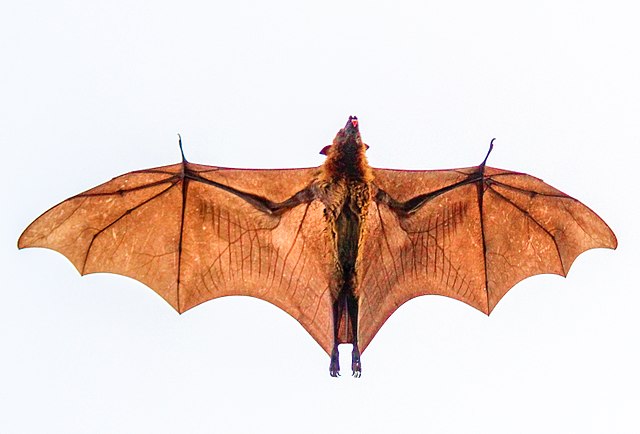
Facts About Bats!
Interesting Facts For International Bat Night
Holding the accolade of being the world’s only true flying mammal, bats are mesmerising animals. Found almost everywhere on our beautiful planet, this diverse species ranges from as small as just 3cm to as large as 40cm. On the 26th to 27th August, they also get their own dedicated night of significance. In respect of this, I thought they would be due an article…
The smallest is the Kuhn Kitty bat, also known as the Bumblebee bat or Kitty’s hog-nosed bat, weighing in at less than two grams and a petite 3 centimetres long. The Flying Fox bat (pictured), with a head and body length of 40cm and wingspan of 1.5 metres (not native to the UK), is the largest. Here are some more interesting facts about our winged friends:
How Many Species Of Bats Are There?
There are over 1400 species of bat worldwide. Here in the UK, we have 18 species of bat, and 17 of them are known to be breeding here. By comparison, there are nine species of bat established in Ireland and the US and Canada are home to around 45 species.
The largest species, the Flying Fox bat, comprises around 65 species. These can be found in mainland Asia, on tropical islands, in Madagascar, Australia and Indonesia.
Are They At Risk Of Extinction?
Yes, some are unfortunately. According to the Bat Conservation Trust, four of the UK’s 17 breeding bat species have been identified as red-listed for being at risk of extinction.
How Long Do They Live For?
Bats can live for up to 30 years. The world’s oldest living bat however, lived way beyond this. The Brandt’s Bat was apparently found in a cave in Siberia and had been banded in 1964, making it least 41 years old.
How Fast Can Bats Fly?
This varies depending on the species, but Brazilian Free-tailed Bats move fast and can reach speeds around 100 miles per hour.
When Was The First Bat Discovered?
Well-preserved bat skeletons found in Wyoming could be the oldest ever discovered. The fossils of Icaronycteris gunnelli are estimated date back over 52 million years.
What Is The Most Common Type In The UK?
Pipistrelles are the most prevalent British bats, weighing around 5 grams with reddish-brown fur and black wings and face. Their average lifespan is 4-5 years with a maximum recorded as 11 years.
What Do They Eat?
British bats eat only insects, which they catch at night. They particularly like moths, mosquitoes and other flies.
Where And When Is It Best To Spot Them?
Bats live in roof spaces, hollow trees, under tiles and soffits, loose bark on trees, or in splits in the trunks and branches of trees. British bats will enter hibernation in autumn time, around early October, emerging anytime from March to late April and into May. They tend to be most active in the summer months when they are out of hibernation, hunting for food, giving birth and bringing up young. The best time to spot them is around sunset or sunrise when it is warm and dry.
What Frequency Do They Emit?
Bats emit calls from about 12 kHz to 160 kHz. The upper limit of hearing range in average adults is believed to be around 15–17 kHz.
To find out more about the UK’s resident bat population visit the Bat Conservation Trust’s website. If you’re interested in bat spotting, they have a National Bat Monitoring Programme for you to participate in.